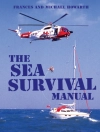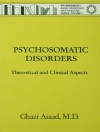This book provides an accessible guide to neuromuscular disorders using case scenarios from the world-renowned MRC Centre for Neuromuscular Diseases at the National Hospital, Queen Square, London, UK. Fifty genetic and acquired disorders are presented in a practical, easy-to-read format, including those that are common and also some which are rare.
Each case covers the history, examination and investigations, including neurophysiology, neuroradiology and neuropathology if appropriate. Discussions of each case include the differential diagnosis, useful clinical pointers and a brief summary of the management of the condition.
Neuromuscular Disease: Case Studies from Queen Square is aimed at neurology trainees and consultant general neurologists.
สารบัญ
Section 1: Peripheral nerve, neuromuscular junction and motor neuron disorders .- A woman who could not wear high heels.- Rare as rocking horse droppings…- A lady with ataxia – an example of Hickam’s Dictum.- A lady with tremor not due to Parkinson’s disease.- A makeup artist with Crohn’s disease.- Not a laughing matter.- Leg swelling and painful feet in a business man.- A man with back pain and weight loss.- A man with progressive weakness and muscle twitching.- A woman with burning hands.- Another case of unsteadiness.- A young man with blurred vision and foot drop.- Progressive motor weakness in a Somalian man.- A man with a pacemaker develops difficulty walking.- Cramps, weakness and fasciculations.- A lady with weakness since childhood.- A man with an insidious, painful mononeuropathy.- A lady with head drop.- The dangers of home preserved vegetables.- A man with a dry mouth and weakness.- A man with difficulty chewing gum and an ominous family history.- A patient with anacute syndrome, recovers and represents years later.- A man with recurrent chest infections.- A medical student with episodes of weakness and sensory disturbance.- Weakness in an Indian man.- A man with episodes of shoulder pain and a weak arm.- A man with painful feet and hand ulcers.- A psychologist with wrist drop.- Section 2: Muscle disorders .- Longstanding drooping eyelids.- Drooping eyelids PLUS.- Neither one nor the other.- When is myotonia not caused by myotonic dystrophy?.- Myotonia and paralysis-two syndromes, one diagnosis.- Typical phenotype, MRI and histology.- Atypical phenotype, MRI and histology.- A multisystem muscle disorder needs monitoring.- The less aggressive and less common cousin.- A common cause of progressive proximal weakness…- … and the other common cause.- A treatable systemic muscle disease.- A blood vessel disease causing weakness.- Antibody-mediated muscle disease?.- When the wind comes back.- When the wind does not come back.- Paralysis is only a part of the problem.- “Back to the basics”-never forget to look at the back.- Is it time to take the heat out of the problem?.- Praying for an answer can be helpful.- Neuromuscular junction dysfunction is not always myasthenic.- Carrying shopping can be difficult, especially for men.
เกี่ยวกับผู้แต่ง
Hadi Manji MA MD FRCP, Chris Turner FRCP Ph D, Matthew R. B. Evans MBBS
MRC Centre for Neuromuscular Diseases, National Hospital for Neurology and Neurosurgery, Queen Square, London












